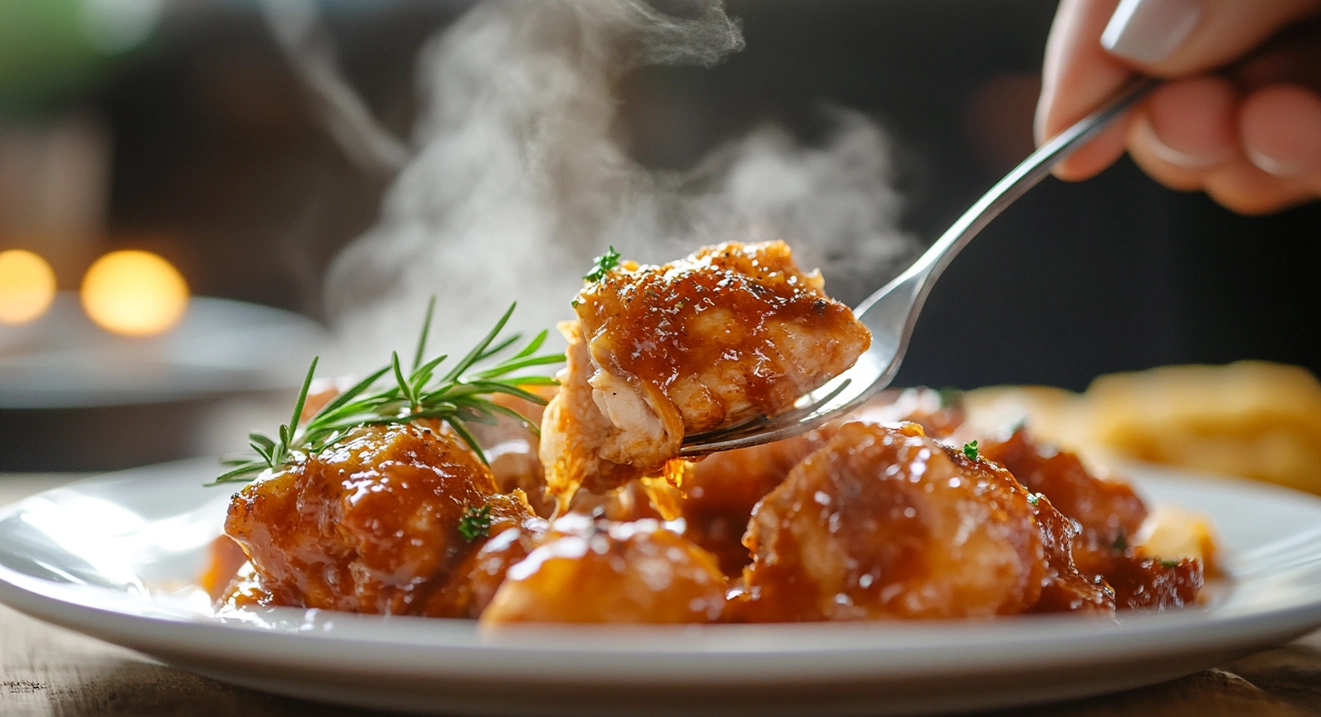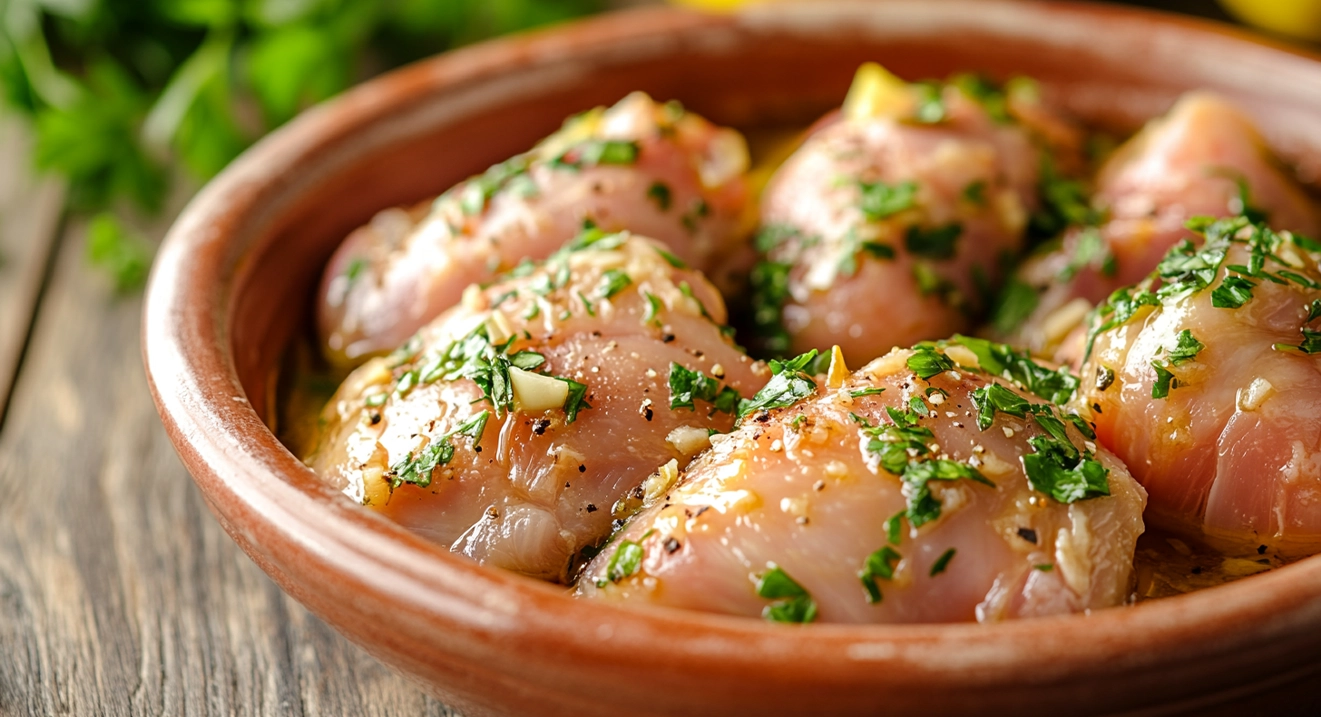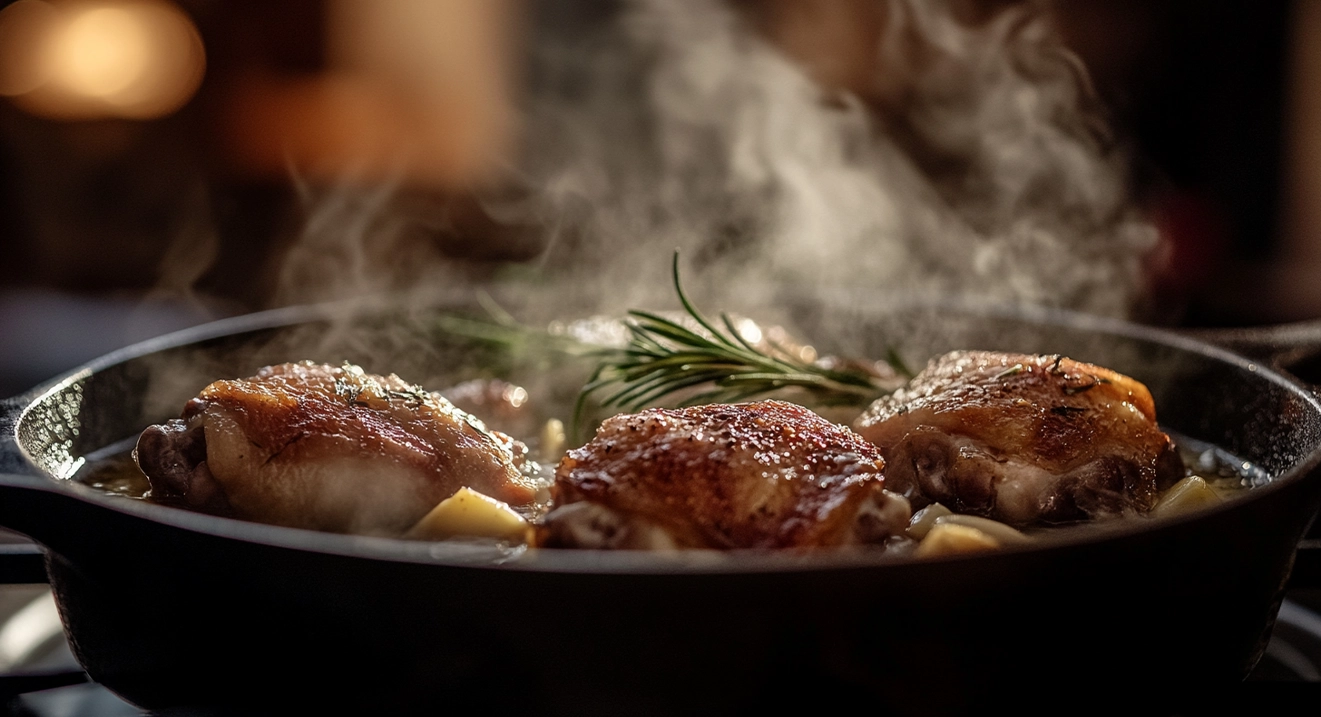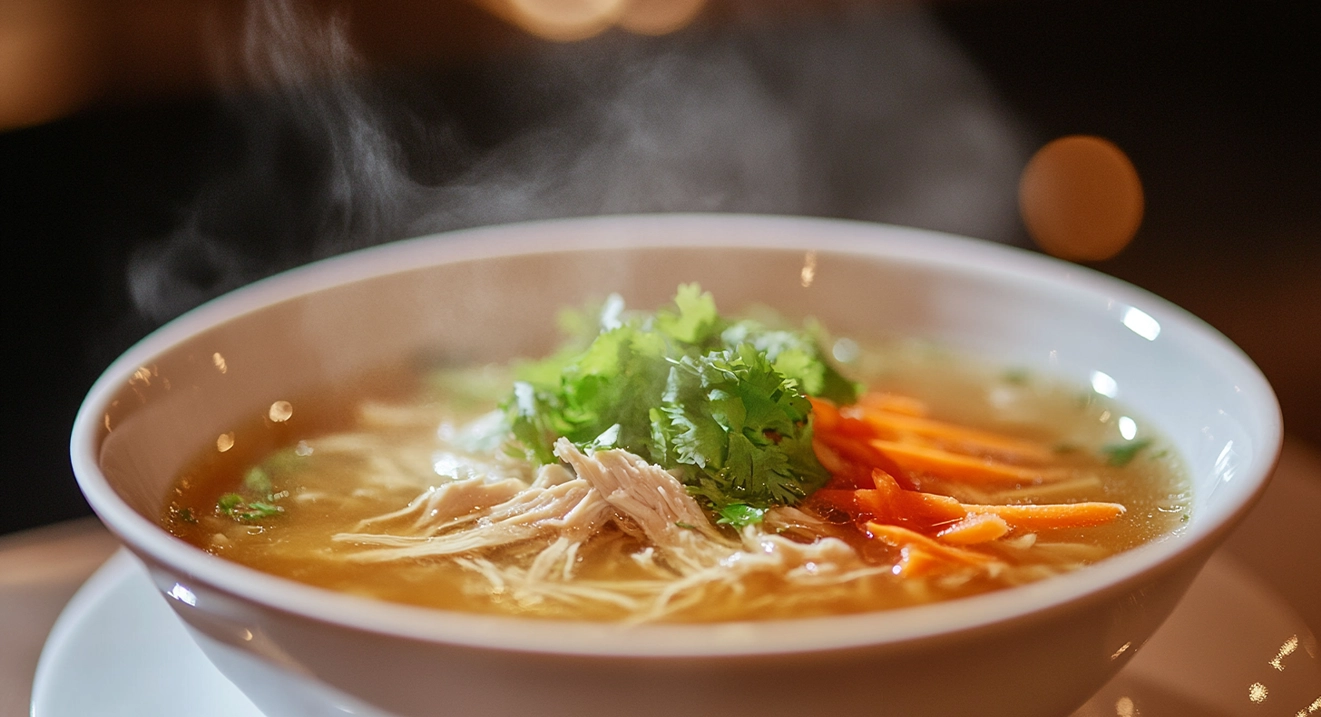Master the Art of Cooking Tender Chicken: Proven Tips and Techniques

Understanding Tender Chicken Texture
What Makes Chicken Tough?
The texture of tender chicken can vary greatly, and one of the most common concerns is toughness. Several factors contribute to this:
- Overcooking: When chicken is cooked too long, the proteins denature and lose moisture, resulting in a rough texture.
- Age of the Chicken: Older chickens tend to have stricter meat due to the development of connective tissues over time.
- Improper Preparation: Cooking chicken directly from frozen or failing to tenderize it can lead to uneven cooking and tougher meat.
- Muscle Type: Cuts like the breast have less fat and are more prone to dryness and toughness than fattier cuts like thighs.
- Insufficient Resting Time: Not allowing the chicken to rest after cooking prevents the juices from redistributing, making the meat seem drier and more challenging.
The Science Behind Tender Chicken
A combination of biological and cooking factors influences tenderness in chicken:
- Protein and Connective Tissue: Chicken meat comprises muscle fibers connected by connective tissues. Heat causes the proteins to coagulate during cooking and the connective tissue to break down. Proper temperature and time are critical for achieving a tender texture.
- Fat Content: Fat helps keep the meat moist and increases the perception of tenderness. Cuts with higher fat content naturally feel softer and juicier.
- Marination: Using acidic marinades with ingredients like lemon juice, vinegar, or yogurt can help break down proteins and soften the meat. Enzymes in certain marinades, like pineapple or papaya, can also contribute to tenderness.
- Cooking Techniques: Low and slow cooking methods, like braising or poaching, allow collagen in the connective tissue to convert into gelatin, enhancing tenderness.
- Brining: Soaking chicken in a saltwater solution adds moisture to the meat and helps maintain its tenderness during cooking.
Choosing the Right Chicken
Fresh vs. Frozen Chicken
Deciding between fresh and frozen chicken depends on your needs and preferences. Here’s a breakdown:
- Fresh Chicken:
- Advantages: Minimal processing often results in better flavor and texture, making it ideal for dishes where the quality of the meat is paramount.
- Disadvantages: Shorter shelf life and needs to be used within a few days of purchase.
- Best For: Quick meals or recipes where marination is not required.
- Frozen Chicken:
- Advantages: Frozen chicken is convenient and longer-lasting. It’s easy to store and can be used whenever needed. It’s often more economical and readily available.
- Disadvantages: It may lose some texture and flavor during the freezing process. If appropriately thawed, it can lead to smooth cooking.
- Best For: Recipes that involve slow cooking, stews, or heavy seasoning.
Organic, Free-Range, or Conventional Chicken
Understanding the differences between these types of chicken can help you make informed choices:
- Organic Chicken:
- What It Means: Raised without synthetic pesticides, antibiotics, or growth hormones and fed organic feed.
- Advantages: Perceived as healthier and more sustainable. It often has a better flavor due to high-quality feed.
- Disadvantages: Typically more expensive.
- Free-Range Chicken:
- What It Means: Chickens have access to the outdoors for a certain amount of time daily.
- Advantages: More natural environment, potentially better flavor and texture.
- Disadvantages: It may not always meet expectations as “free-range” access can vary widely between producers.
- Conventional Chicken:
- What It Means: Raised in controlled environments, often in large-scale farming operations.
- Advantages: Affordable and widely available.
- Disadvantages: It may contain antibiotics or be less environmentally friendly.
Importance of Proper Marination

How Marinades Work
Marination is a culinary technique that enhances the flavor and texture of meat by soaking it in a mixture of ingredients. Here’s how it works:
- Flavor Infusion: Marinades introduce bold flavors into chicken. Acidic ingredients, spices, and herbs penetrate the surface, enriching the taste.
- Tenderizing Effect: Acids, enzymes, or certain chemicals in the marinade break down proteins and connective tissue in the meat, resulting in a softer texture.
- Moisture Retention: Marinades, especially those with oils, help lock in moisture during cooking, preventing the meat from drying.
- Chemical Reaction: The combination of acids and salts in a marinade creates a chemical reaction that modifies the muscle fibers, improving the overall eating experience.
Ingredients That Help Tenderize
Not all marinade ingredients are created equal. Here are key components that contribute to tenderizing chicken:
- Acidic Ingredients:
- Examples: Lemon juice, vinegar, yogurt, buttermilk.
- How They Work: Break down proteins and slightly denature them, making the meat tender and juicy.
- Enzymatic Ingredients:
- Examples: Pineapple, papaya, kiwi, ginger.
- How They Work: Contain natural enzymes (like bromelain in pineapple and papain in papaya) that break down connective tissues.
- Salt:
- Examples: Table salt, kosher salt, soy sauce.
- How It Works: Helps draw water into the meat, keeping it moist and enhancing tenderness.
- Fat:
- Examples: Olive oil, sesame oil, coconut milk.
- How It Works: Helps carry flavors into the meat and creates a protective barrier against drying out during cooking.
- Flavor Enhancers:
- Examples: Garlic, onion, spices, herbs.
- How They Work: Add depth to the marinade without directly affecting tenderness.
Techniques for Tender Chicken
Low-and-Slow Cooking Methods
Low-and-slow cooking is ideal for achieving tender, melt-in-your-mouth chicken. This method relies on gentle heat over a longer time to break down the connective tissues without drying out the meat. Here are the key techniques:
- Braising:
- How It Works: Chicken is seared to develop flavor, then cooked slowly in a flavorful liquid such as broth, wine, or sauce.
- Best For: Tougher cuts like thighs, drumsticks, or whole chicken.
- Tip: Keep the pot covered to trap moisture and cook evenly.
- Slow Cooking (Crockpot):
- How It Works: Chicken is placed in a slow cooker with seasonings and liquid, cooking at a low temperature for several hours.
- Best For: Meal prep, shredded chicken, or stews.
- Tip: Avoid overcooking; on low, most chicken dishes are done in 4–6 hours.
- Smoking:
- How It Works: Chicken is cooked at a low temperature in a smoker, infusing it with rich, smoky flavors while keeping it moist.
- Best For: Whole chicken or bone-in cuts.
- Tip: Use a water pan to prevent drying out during long cooking times.
Quick Cooking for Juiciness
For tender chicken when time is limited, quick-cooking methods that seal in moisture are your best bet. These techniques rely on high heat and short cooking times:
- Searing and Sautéing:
- How It Works: Thin cuts of chicken, like breasts or tenders, are cooked quickly in a hot skillet with oil or butter.
- Best For: Quick meals, salads, or stir-fries.
- Tip: Avoid overcrowding the pan for even cooking.
- Grilling:
- How It Works: Chicken is cooked over direct heat, creating a flavorful crust while retaining juices.
- Best For Marinated cuts or boneless breasts.
- Tip: Grill on medium heat to avoid drying out lean cuts.
- Broiling:
- How It Works: High heat from the oven’s top element cooks the chicken quickly, creating a caramelized exterior.
- Best For: Thin pieces like wings or boneless thighs.
- Tip: Keep a close eye to prevent burning.
- Poaching:
- How It Works: Chicken is gently simmered in water or broth, producing moist and tender meat.
- Best For: Shredded chicken or light, healthy meals.
- Tip: Use aromatics like bay leaves, peppercorns, or herbs for added flavor.

The Role of Brining
Brining is a key technique to enhance chicken’s flavor, juiciness, and tenderness. It involves soaking the chicken in a solution (wet brine) or rubbing it with salt (dry brine) to improve texture and taste.
Wet Brine vs. Dry Brine
Wet Brine
A wet brine involves immersing chicken in a saltwater solution, often combined with herbs, spices, and other flavoring agents.
- Advantages:
- Adds moisture to the chicken, preventing it from drying out during cooking.
- Enhances flavor evenly throughout the meat.
- Best for: Whole chickens, bone-in cuts, or lean parts like breasts.
- Disadvantages:
- Requires more space for soaking.
- Careful timing is needed to avoid overly salty meat.
Dry Brine
A dry brine involves rubbing the chicken with salt and optional seasonings, then allowing it to rest in the refrigerator.
- Advantages:
- It is simpler and less messy than wet brining.
- It creates a crispy skin when roasted or grilled.
- Best for: Cuts with skin or recipes requiring a crispy finish.
- Disadvantages:
- It may add less moisture than a wet brine.
Step-by-Step Guide to Brining
Wet Brine:
- Prepare the Brine:
- Combine water, salt (¼ cup per liter), and sugar (optional) in a large bowl or container.
- Add aromatics like garlic, peppercorns, bay leaves, or citrus slices for flavor.
- Submerge the Chicken:
- Place the chicken in the brine, ensuring it is fully covered.
- Use a weighted plate if needed to keep it submerged.
- Refrigerate:
- Let the chicken brine in the refrigerator for 2–8 hours, depending on the size (e.g., 2 hours for breasts, 6–8 hours for whole chicken).
- Rinse and Dry:
- Rinse the chicken briefly to remove excess salt, and pat it dry with paper towels before cooking.
Dry Brine:
- Season the Chicken:
- Sprinkle salt evenly over the chicken (1 teaspoon per pound) and add optional seasonings like garlic powder, paprika, or herbs.
- Refrigerate:
- Place the chicken on a rack over a baking sheet to catch any drips.
- Leave it uncovered in the refrigerator for 1–24 hours.
- Cook as Desired:
- No rinsing is needed—just pat dry to ensure crisp skin.
Cooking Methods That Enhance Tender Chicken

Steaming and Poaching
These moist-heat cooking methods are excellent for preserving the tenderness and juiciness of chicken.
Steaming:
- How It Works: Chicken is cooked using steam from boiling water without direct contact with the water.
- Advantages:
- Retains moisture and nutrients.
- Produces delicate, tender meat.
- Minimal use of fat.
- Best For: Lean cuts like breasts or boneless thighs.
- Tips:
- Use a steamer basket or bamboo steamer.
- Season the chicken beforehand or pair it with flavorful sauces after steaming.
Poaching:
- How It Works: Chicken is simmered gently in water or broth, keeping it submerged but never boiling.
- Advantages:
- Produces moist and tender chicken.
- It Infuses flavor if cooked with aromatics like herbs, onions, or garlic.
- Great for shredding or salads.
- Best For: Breasts or whole chicken parts.
- Tips:
- Keep the temperature low (around 160–180°F/70–80°C).
- Avoid overcooking, as it can toughen the meat.
Grilling and Baking
These dry-heat methods can also enhance tenderness when done correctly.
Grilling:
- How It Works: Chicken is cooked over direct heat on a grill or barbecue, creating a flavorful char.
- Advantages:
- Adds smoky, caramelized flavor.
- Quick cooking helps retain moisture.
- Best For: Marinated chicken breasts, thighs, or skewers.
- Tips:
- Preheat the grill and oil the grates to prevent sticking.
- Grill on medium heat to avoid drying out lean cuts.
- Let the chicken rest for a few minutes before slicing.
Baking:
- How It Works: Chicken is cooked in an oven, often covered or with added moisture to prevent drying.
- Advantages:
- Even cooking and easy to control temperature.
- It can retain tenderness when paired with marinades or covered during cooking.
- Best For: Whole chickens, drumsticks, or thighs.
- Tips:
- Bake at 375–425°F (190–220°C) for juicy results.
- A meat thermometer ensures the internal temperature reaches 165°F (74°C).
- Baste occasionally or bake with a sauce to keep the meat moist.
Proper Use of Temperature
The Ideal Internal Temperature
Cooking chicken to the proper internal temperature is critical for safety and tenderness. Here’s a guide:
- Ideal Temperature:
- Chicken should reach an internal temperature of 165°F (74°C) in the thickest part of the meat.
- For dark meat (e.g., thighs and drumsticks), cooking slightly higher (170–175°F or 77–79°C) can break down connective tissue for a more tender result.
- Why It Matters:
- Cooking to this temperature kills harmful bacteria like Salmonella, ensuring the chicken is safe to eat.
- Stopping at the right temperature prevents overcooking and keeps the meat juicy.
- Using a Meat Thermometer:
- Insert the thermometer into the thickest part of the meat without touching the bone.
- Check multiple spots for consistent readings.
How to Avoid Overcooking Tender Chicken
Overcooked tender chicken becomes tough and dry, but these tips can help you avoid it:
- Monitor Cooking Time:
- Follow recommended cooking times based on the cut and cooking method.
- Use timers and check the temperature early to prevent overcooking.
- Rest the Meat:
- After cooking, let the chicken rest for 5–10 minutes. This allows the juices to be redistributed, keeping the meat moist.
- During resting, the internal temperature can rise by 5–10°F, so account for this carryover cooking.
- Cook Evenly:
- Pound thick cuts (like breasts) to an even thickness before cooking.
- Use indirect heat for larger pieces or whole chickens to prevent burning the outside while undercooking the inside.
- Avoid High Heat for Lean Cuts:
- Cook chicken breasts and lean cuts at moderate heat to avoid drying them out.
- Use moist-heat methods (like poaching or baking with sauces) to preserve tenderness.
- Use Foil or Lids:
- Cover chicken with foil while baking or grilling to trap steam and keep it juicy. Remove the foil toward the end for a crispy exterior.
FAQs About Cooking Tender Chicken
How Long Should Tender Chicken Rest?
Resting chicken after cooking is essential for retaining its juices and ensuring tenderness. Here’s what you need to know:
- Why Resting Is Important:
- During cooking, the heat pushes juices toward the center of the meat. Resting allows these juices to redistribute evenly, preventing dryness.
- How Long to Rest:
- For more minor cuts (like breasts or thighs), let the chicken rest for 5–10 minutes.
- Rest for more significant cuts or whole chickens for 15–20 minutes.
- How to Rest Properly:
- Place the chicken on a cutting board or plate.
- Cover loosely with aluminum foil to retain warmth without trapping steam, which can soften crispy skin.
Can I Over-Marinate Tender Chicken?
Yes, over-marinating chicken is possible and can negatively affect its texture and flavor. Here’s why:
- Effects of Over-Marinating:
- Acidic Marinades: Prolonged exposure to acidic ingredients (like vinegar, lemon juice, or yogurt) can break down proteins excessively, making the chicken mushy.
- Salt-heavy Marinades: Too much salt can dry out the meat over time instead of tenderizing it.
- Recommended Marinating Times:
- Thin Cuts (e.g., tenders, cutlets): 30 minutes to 2 hours.
- Thicker Cuts (e.g., breasts, thighs): 2–8 hours.
- Whole Chicken: 4–12 hours.
- Enzymatic Marinades (e.g., pineapple, papaya): They are limited to 30 minutes to 2 hours due to their powerful tenderizing effects.
- Tips to Avoid Over-Marinating:
- Use a timer to keep track of the marinating time.
- If preparing in advance, use a mild marinade or store the chicken plain and add the marinade closer to cooking time.
Conclusion and Final Thoughts
Summary of Key Techniques
Cooking tender chicken is a skill that involves understanding the balance between preparation, temperature, and technique. Here’s a quick recap of the key methods to ensure perfect results:
- Preparation:
- Use brining (wet or dry) to enhance flavor and moisture.
- Marinate appropriately with the right ingredients and timing.
- Cooking Techniques:
- Opt for low-and-slow methods like braising or poaching for ultimate tenderness.
- Quick methods like grilling or searing work best for lean cuts when time is limited.
- Temperature Control:
- Cook chicken to an internal temperature of 165°F (74°C) for safety and optimal texture.
- Allow the meat to rest post-cooking to redistribute juices.
- Avoid Overcooking:
- Monitor time and temperature carefully.
- Use tools like thermometers to achieve consistent results.
Encouragement to Experiment
Cooking tender chicken is as much an art as it is a science. Don’t be afraid to try new methods, flavors, and techniques to make it your own:
- Experiment with Marinades: Mix and match spices, acids, and oils to create unique flavor profiles.
- Play with Cooking Methods: Combine techniques like grilling followed by steaming or roasting after brining for creative results.
- Explore Different Cuts: To expand your repertoire, try thighs, wings, or even whole chickens.
